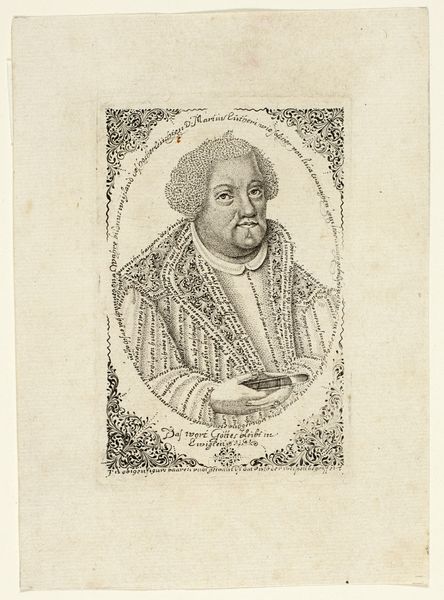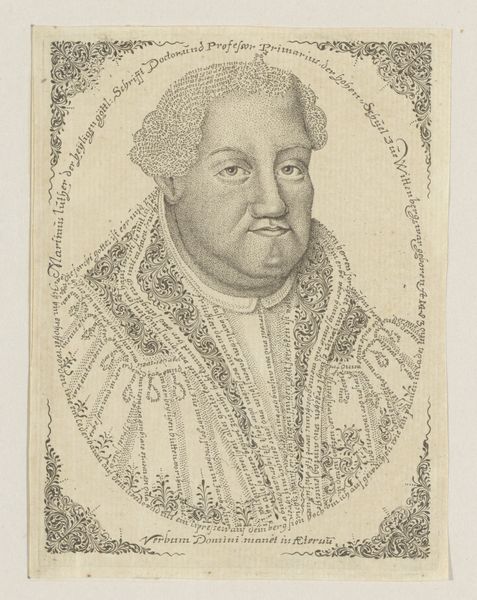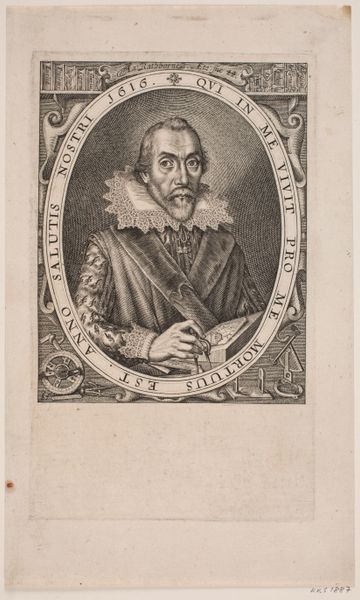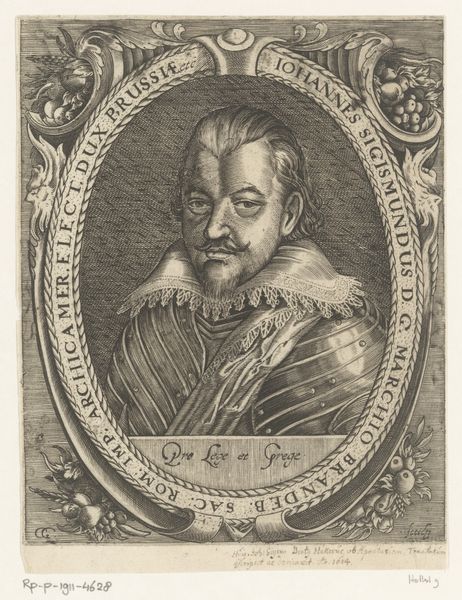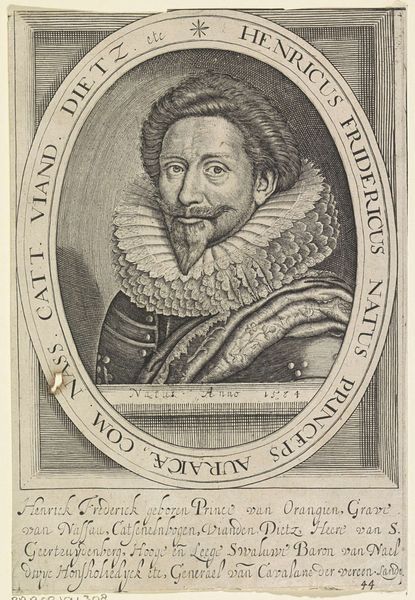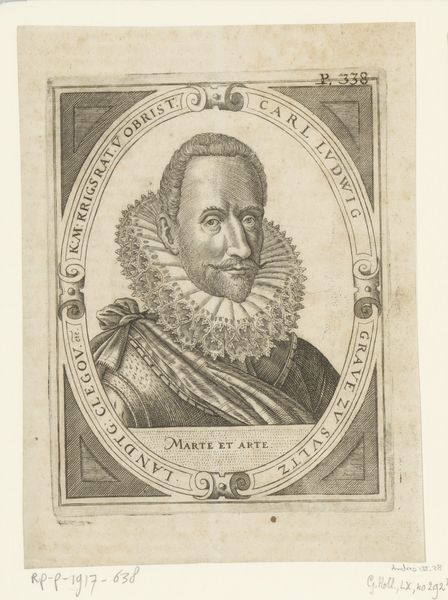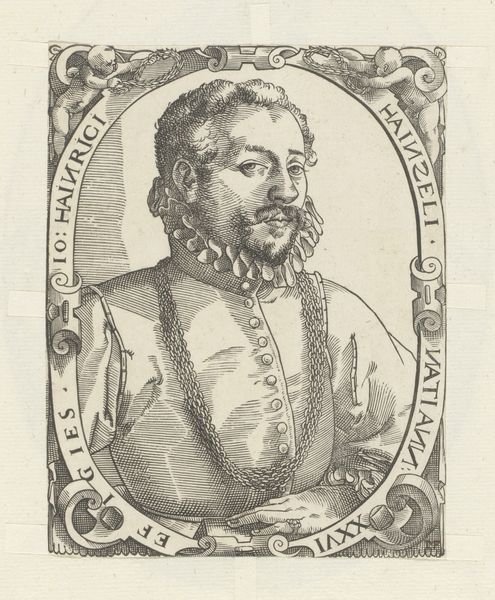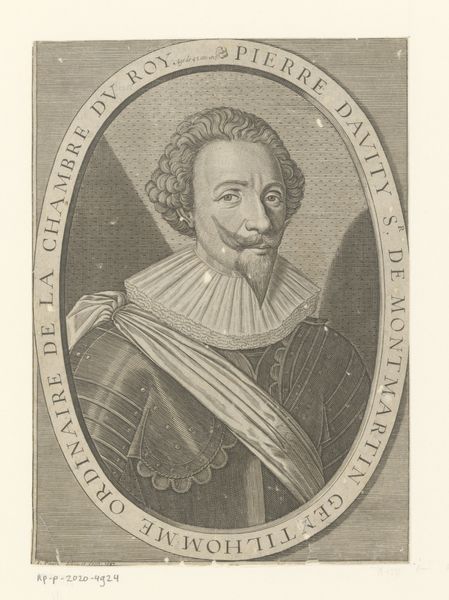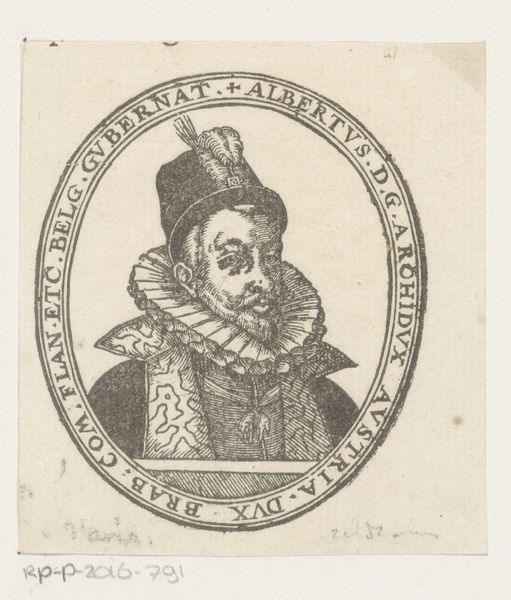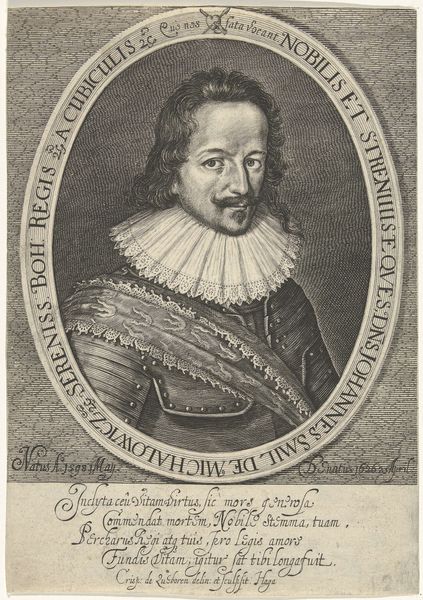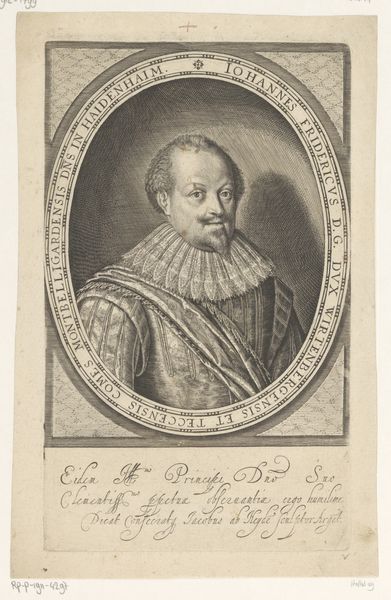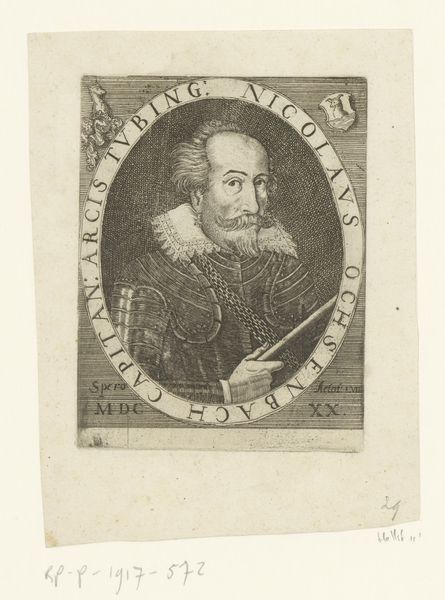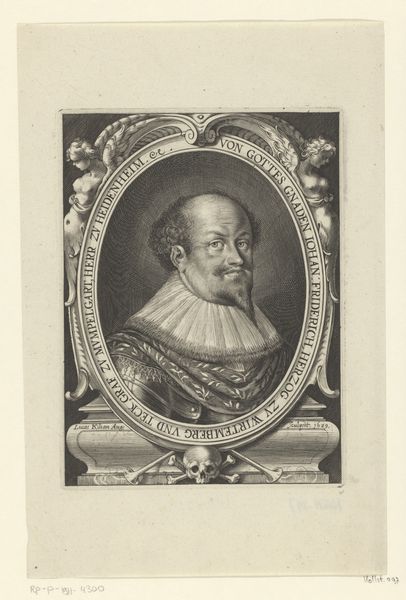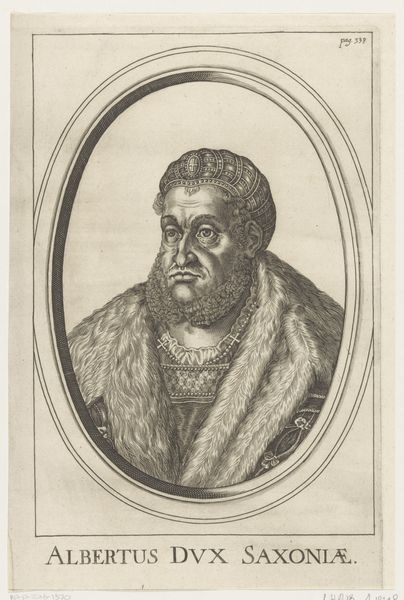
drawing, print, engraving
#
portrait
#
drawing
#
baroque
# print
#
engraving
Dimensions: Sheet: 3 3/4 × 2 5/8 in. (9.5 × 6.7 cm)
Copyright: Public Domain
Curator: I’m struck by the detail in this portrait. Before us is an engraving dating from between 1675 and 1707 titled "Portrait of Martin Luther" attributed to Johann Michael Püchler. Editor: Immediately, I sense a mood of solemnity, almost austerity, emphasized by the monochrome palette and tight composition. There’s something almost medieval about the overall presentation. Curator: It is interesting to consider the construction of masculinity and power in the baroque period, as well as in later artistic representations and historical interpretations, where Luther served as a complex, multifaceted figure. The text encircling Luther's image emphasizes and solidifies the central tenets of Luther's message—justification by faith. The composition speaks to how religious authority gets encoded. Editor: Yes, the surrounding text—almost a halo of words—is a very deliberate choice. Words, particularly sacred texts, carry inherent authority and meaning. This artwork clearly employs Luther's own words in this decorative border as part of a larger symbolic language of faith. You can tell just by looking at this that Luther had deep significance for this artist and their world. The detail around the central image feels deliberately evocative. Curator: Absolutely. Considering the turbulent backdrop of religious reformation and the emergence of distinct theological identities, this print operates as more than a simple depiction. It is a declarative statement, embedding both theological and political perspectives, with the historical conditions that produced this piece serving as a cultural inheritance, deeply shaping artistic choices. The engraving style further mirrors Luther’s complex historical identity. Editor: Agreed. The figure's robust physical presence – emphasized through detailed stippling – projects confidence and defiance. The symbol-laden depiction uses imagery and visual cues to anchor Martin Luther's likeness within the ongoing narrative and visual landscape of Protestantism. Even his simple dark garment reads as an assertion. Curator: Exploring such depictions is crucial as we seek a more thorough understanding of the intersection between visual representation, social structures, and power dynamics inherent in the past. It helps reveal to contemporary audiences a vision of not just an important figure but also how society views themselves. Editor: The power of symbolism lies in its enduring quality—a persistent echoing across centuries. Through images, artists transmit and transform ideas; by considering these choices closely we uncover lasting aspects of cultural memory.
Comments
No comments
Be the first to comment and join the conversation on the ultimate creative platform.
